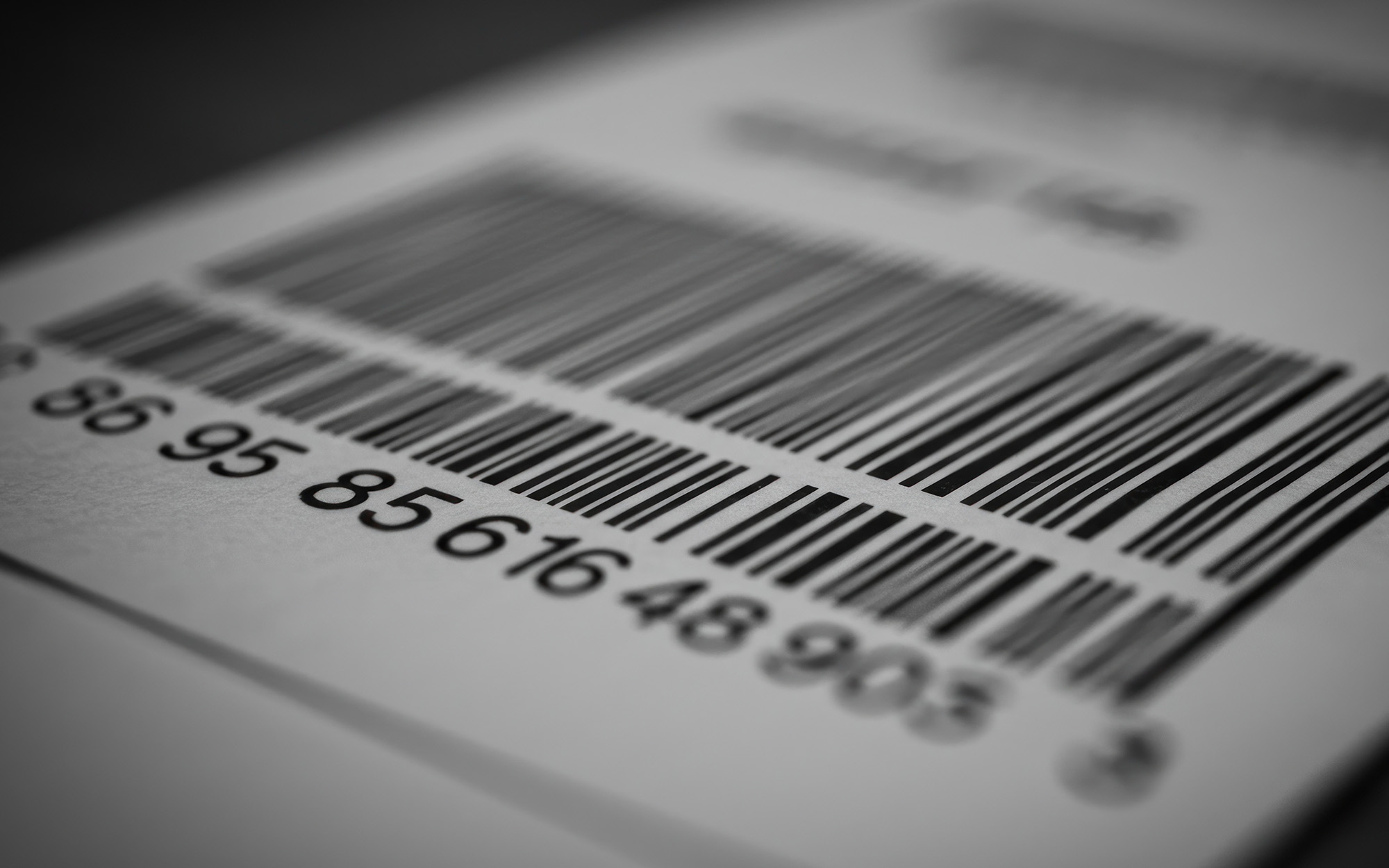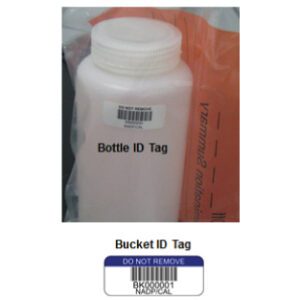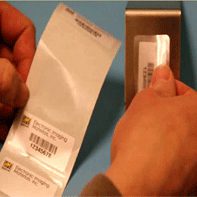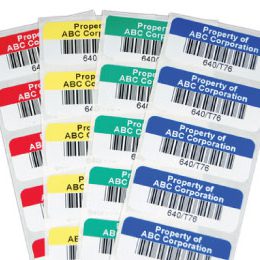If you’re running a diagnostic lab, there’s no room for label adhesion problems. One misread barcode or peeled-off label can disrupt workflows, trigger retesting, or compromise patient results. And yet, not all labels are created equal. Many labs unknowingly use subpar labels until problems pile up. If any of these red flags sound familiar, it may be time to upgrade to diagnostic-grade labels that are engineered to perform under pressure.

1. Smudged or Faded Print That Fails Scans
You depend on barcodes to track and process every sample that comes through your lab. Labels that smear when touched with gloves or blur after coming into contact with alcohol wipes are more than a nuisance—they’re a liability. When print quality falters, your team is left guessing at vital data, and guesswork is the enemy of diagnostic integrity.
The Problem
Illegible barcodes are one of the most common labeling issues in diagnostics. If your labels fade over time or smudge with a quick wipe, that’s a clear sign they’re not built for diagnostic environments.
Why It Happens
- Low-grade materials not optimized for thermal transfer printing
- Incorrect ribbon-to-label pairing
- Exposure to alcohol-based disinfectants or humidity
- Use of outdated or mismatched printers that can’t produce high-DPI results
Why It Matters
A single unreadable barcode can force a retest, delay results, or compromise traceability—none of which your lab can afford. In regulated environments with critical chain-of-custody and patient safety, even one barcode failure can trigger a compliance issue or jeopardize test results. That’s why using print-optimized label materials with thermal transfer compatibility is essential.
2. Labels That Peel, Curl, or Slide Off
When labels fall off vials, curl at the corners, or slip down tubes, they’re not just annoying. They’re dangerous. Diagnostic workflows depend on continuous traceability, and if your label doesn’t stay attached from point A to point Z, that chain breaks. Whether it’s a centrifuge spin, a dry ice shipment, or a technician’s gloved hands, your label has to endure it all without losing grip or legibility.
The Problem
Labels that don’t stay put create serious headaches. If they peel mid-process or slide down tubes, your workflow and data integrity are at risk.
Why It Happens
- Adhesive not rated for the tube’s surface material (e.g., polypropylene, glass)
- Temperature extremes like cryogenic storage or high heat
- Moisture or condensation disrupting the bond
- Lack of label surface prep before application (e.g., applying to damp or frosty vials). For this use case, EIM offers CryoLabel® Frost, which is built to bond securely to already frozen vials.
Why It Matters
Loose labels can jam automated equipment, misalign barcodes, or even result in lost sample identity. When a label slips out of alignment, even the most advanced instruments like Hologic systems can misread or reject it. Worse yet, separating a sample from its identifier can lead to irretrievable data or repeat testing.
Diagnostic-grade labels use high-performance adhesives that are tested for lab-specific conditions—from ultra-low freezers to autoclaves—ensuring that once a label is applied, it stays exactly where it belongs.

3. Frequent Misreads or Scanner Errors
Scanners are only as reliable as the barcodes you feed them. And when you’re dealing with high-throughput diagnostic equipment, even a single misread can throw off your entire workflow. Time lost to rescanning, manual data entry, or worse—incorrectly labeled specimens—can’t be recovered. It chips away at your lab’s efficiency and puts patient safety on the line.
The Problem
Technicians having to re-scan barcodes or manually key in data is dangerous. Every manual step introduces the possibility of error.
Why It Happens
- Poor print contrast or inconsistent quality
- Wrinkled or bubbled labels due to sizing mismatch
- Layout incompatible with scanner alignment zones
- Barcodes placed too close to the label edge or in inconsistent locations
Why It Matters
Hologic machines and other automated systems rely on speed and precision. Misreads slow down your throughput and introduce unnecessary risk. Scanners may misfire or reject the label if your barcodes aren’t crisp, consistent, and properly aligned. That can halt automation, cause test delays, and create costly bottlenecks. Diagnostic-grade labels are designed with layout precision, superior print receptivity, and machine compatibility, ensuring your lab stays on schedule and in spec.
4. Labels That Can’t Handle Sterilization or Cleaning Agents
Routine lab cleaning involves harsh chemicals, high humidity, and repeated wipe-downs using alcohol, bleach, or disinfectant sprays. These processes are essential for maintaining a safe and sterile environment, but they also pose a constant threat to weak or improperly created labels. If your labels can’t withstand daily sanitization without fading, smearing, or detaching, they’re creating more risk than reliability.
The Problem
If a wipe-down with alcohol or exposure to bleach causes your labels to degrade or detach, they’re not diagnostic-grade. Cracked or peeled labels can leave behind residue, interfere with barcode scanning, or result in failed identification during testing.
Why It Happens
- Ink or topcoat not resistant to solvents
- Paper-based labels that break down under moisture
- Labels without protective laminates or coatings
- Adhesive failure triggered by temperature shifts or steam exposure
Why It Matters
In environments where sanitation is routine, your labels must withstand regular exposure to disinfectants without degrading. A degraded label can compromise critical sample information, disrupt automation systems, and erode patient trust. In highly regulated labs, this can also open the door to compliance violations. Diagnostic grade labels made from durable synthetic materials with solvent-resistant coatings are specifically engineered for these conditions. They ensure sample integrity remains protected no matter how often the surface is cleaned or exposed to challenging chemical environments.
5. Labels That Don’t Match Your Workflow
If your team is spending time trimming labels, adjusting margins, or running test prints every shift, your labels are working against you, not with you. Labels should enhance your workflow, not hold it hostage. When your staff resorts to workarounds just to get labels to function, you’re losing productivity, increasing risk, and wasting resources.
The Problem
If your labels feel like a workaround—requiring manual resizing, layout adjustments, or frequent reprints—you’re wasting time. Your system is likely misaligned, and your labels aren’t doing their job.
Why It Happens
Generic or off-the-shelf labels not made for diagnostic use
Mismatch with printer or device specifications
Inadequate software integration between your LIS and label formatting tools
Lack of label sets pre-aligned for multi-vial or multi-test workflows
Why It Matters
Diagnostics is all about precision and efficiency. Labels that don’t align with your team’s daily workflow create hidden friction that slows everything down, from sample intake to reporting. Over time, even minor inefficiencies snowball into bigger bottlenecks. Diagnostic grade labels are tailored to your systems and processes, including material size, adhesive strength, layout spacing, and barcode formatting. When everything fits seamlessly, your lab benefits from faster throughput, fewer errors, and smoother compliance audits.
Many labs unknowingly rely on labels that fall short of diagnostic standards. Electronic Imaging Materials (EIM) offers sample packs and labeling reviews. Our team helps you evaluate your current setup and recommend labels built to meet the demands of your equipment and workflow.
Why Diagnostic Grade Labels Are Worth It
Upgrading to diagnostic-grade solutions improves performance, trust, and consistency. These labels are engineered to excel under pressure, providing the reliability your lab needs to operate confidently every day.
Unlike generic options, diagnostic-grade labels are rigorously tested to ensure they meet the stringent demands of clinical and research environments. They stand up to every curveball your workflow throws: freezer conditions, chemical exposure, tight scanning tolerances, and high-throughput automation.
Here’s what you can expect from labels that are truly built for diagnostics:
- Resist heat, cold, and moisture: From cryogenic storage to autoclave sterilization, these labels don’t budge.
- Pair flawlessly with thermal transfer printing: You get sharp, scannable text and barcodes that won’t smudge or fade.
- Stay intact through sterilization, handling, and storage: No peeling, bubbling, or adhesive failures.
- Deliver accurate reads in automated diagnostic systems: Every scan counts, and these labels are built to ensure each one lands on target.
Investing in diagnostic-grade labels is essential when accuracy, speed, and regulatory compliance are non-negotiable.
EIM Delivers Labels Built for Diagnostics
Electronic Imaging Materials doesn’t just sell labels. We help you solve problems before they become bottlenecks. Whether you’re dealing with persistent misreads, frequent re-labeling, or adapting to new instrumentation, we bring decades of experience to help you make the right call.
Our team understands what it takes to build diagnostic-grade labels that perform under pressure and meet the specific demands of platforms like Hologic. We don’t believe in one-size-fits-all; instead, we tailor our solutions to your exact needs. Let’s fix those labeling headaches for good. Contact EIM today and start the transition to labels that support your lab’s highest standards.





